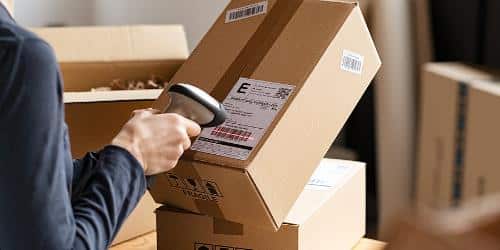With the COVID pandemic now firmly on the horizon, the packaging machinery industry has been able to refocus its attention on growth. And according to recent market research, that is certainly the case, with the analysis projecting growth of 4.5% through 2023. This is due to a marked increase in manufacturing activity, rising mechanization in developing countries; and high-value sales of state-of-the-art equipment in affluent markets.
Food and beverage applications remain the largest growth sector, accounting for 56% of new demand in global packaging machinery in 2023. Packaging materials and associated machinery are heavily relied upon by manufacturers, and the reason for new investment includes:
- New packaging configurations are needed to support the expansion of new products
- Machine and product performance is enhanced through the addition of new technology
- Updates to technical and safety standards require ongoing investment to ensure compliance
The key to this growth will be a rise in investment in automated shrink-wrap packaging machinery. Sustainability issues are at the top of the agenda for many manufacturers, and with semi- and fully-automated shrink-wrap packaging machines that support new environmentally friendly materials now available on the market, more businesses are benefiting from this exciting new technology.
Another key driver for this investment growth is a government initiative offering financial relief for new plants and machinery. It is available until March 31st, 2023, and can also include expenditures incurred under purchase, hire, or similar contracts (additional criteria must be met).
Called the “super deduction allowance,” it means companies investing in new plants and machinery assets can claim a 130% capital allowance for qualifying equipment; and a 50% first-year allowance for qualifying special rate assets. This so-called “super-deduction” allows businesses to cut their tax bill up to 25p for every £1 of investment.
Growing Packaging Trends
Below are just a handful of examples of some of the packaging trends that are providing cutting-edge for the industry.
#1. Internet of Packaging
The use of technology such as smart labels, RFID, QR codes, and NFC chips leads the way in the smart packaging field. By making the packaging a digital tool and data carrier, these tools offer a range of benefits, such as authentication, security, and connectivity. It has become easier to engage with customers with discount codes, product content and video tutorials, and more.
#2. Sustainable Packaging
Plastic has been by far the most commonly used packaging material since the early 20th century, but the environmental issues it has caused are now well documented. The hunt for alternatives to traditional plastic packaging is well underway, with several new solutions already in use. This includes compostable shrink wrapping, which is able to decompose under natural conditions. The material is renewable, recyclable, and sustainable, and is a much better option than traditional plastic.
#3. Packaging Automation
The incorporation of automated machines into manufacturing facilities has grown rapidly in recent years. It’s a big packaging trend that covers everything from filling and packing to deciding and palletizing, using AI and robotics to reduce human errors and improve efficiency. While some are concerned about the upfront investment costs involved, if there is a good business case for introducing it into your business, automation can be a real game changer.
#4. Active Packaging
Food waste is a big challenge that is being addressed across the globe, and with the Food and Agriculture Organisation stating that one-third of all food produced for consumption is waste, you begin to understand the scale of the problem. Active packaging helps to increase the shelf life of a product using innovative techniques. For example, modified atmospheric packaging uses moisture regulators and ethylene absorbers or oxygen to keep food fresh.
#5. Nanotechnology
Nanotechnology is finding increasing use at various stages of the packaging supply chain, including areas such as tracking, authentication, and product safety. When it comes to packaging, barrier properties, and tensile strength can be enhanced by nanotechnology when mixed with polymer chains. Nanotech also helps address concerns regarding food safety, as nanocoatings can be applied to the surface of the product to protect it from dust, dirt, and stains.
#6. 3D Printing
The integration of 3D printing into the packaging industry is a natural progression and opens a wealth of exciting new innovations. In particular, it provides a stronger platform for personalized packaging while cutting down on plastic waste. Designers and engineers have more room for creative freedom while still achieving the end goal of producing high-quality products.
#7. Transform Your Product Packaging
Kempner is at the forefront of the automated shrink-wrap packaging industry, developing innovative new technology centered on quality, cost efficiency, and productivity. As customer demands evolve, we continue to lead the way with new trends and ideas, using decades of industry experience to ensure our customers have some of the best products on the market. Get in touch with our team today to find out more.






